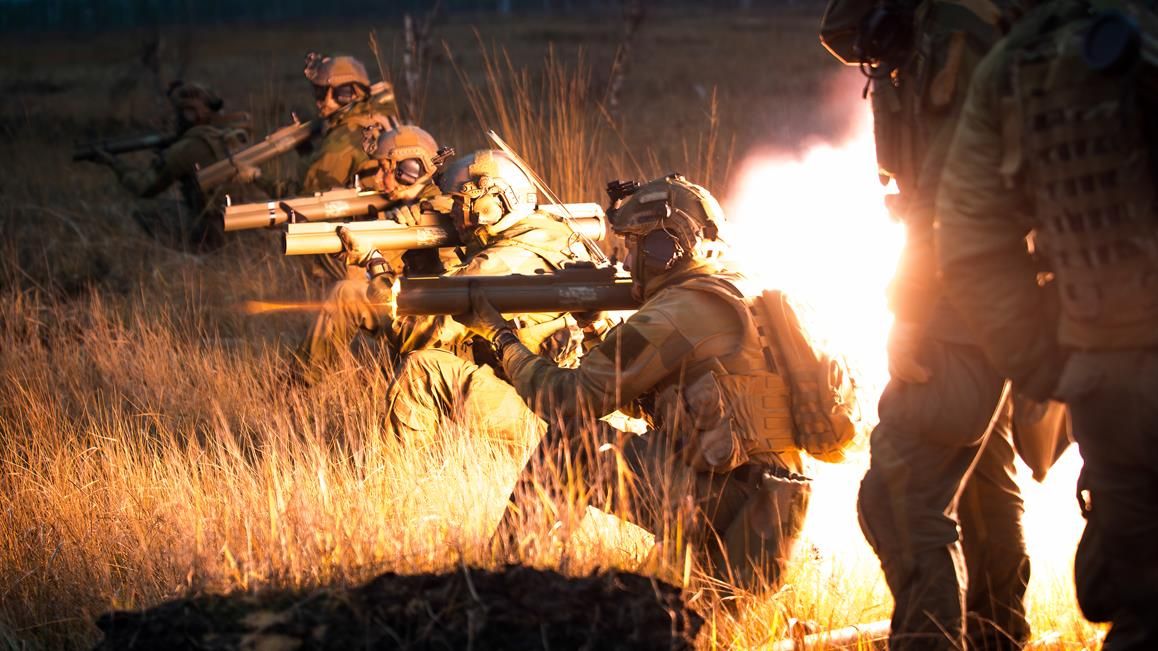
SHAH ALAM: The Army is getting delivery of a batch of Nammo M72 anti structure and anti tank (LAW) shoulder fired weapons. The batch, supposedly the second one, is awaiting delivery, most likely in Norway, as the Defence Ministry has just issued a tender for a multi modal transport operator (MTO) to deliver it to Malaysia.
Nammo produced the M72 LAW – made famous in the Vietnam War – at its plants in Norway and in the US.
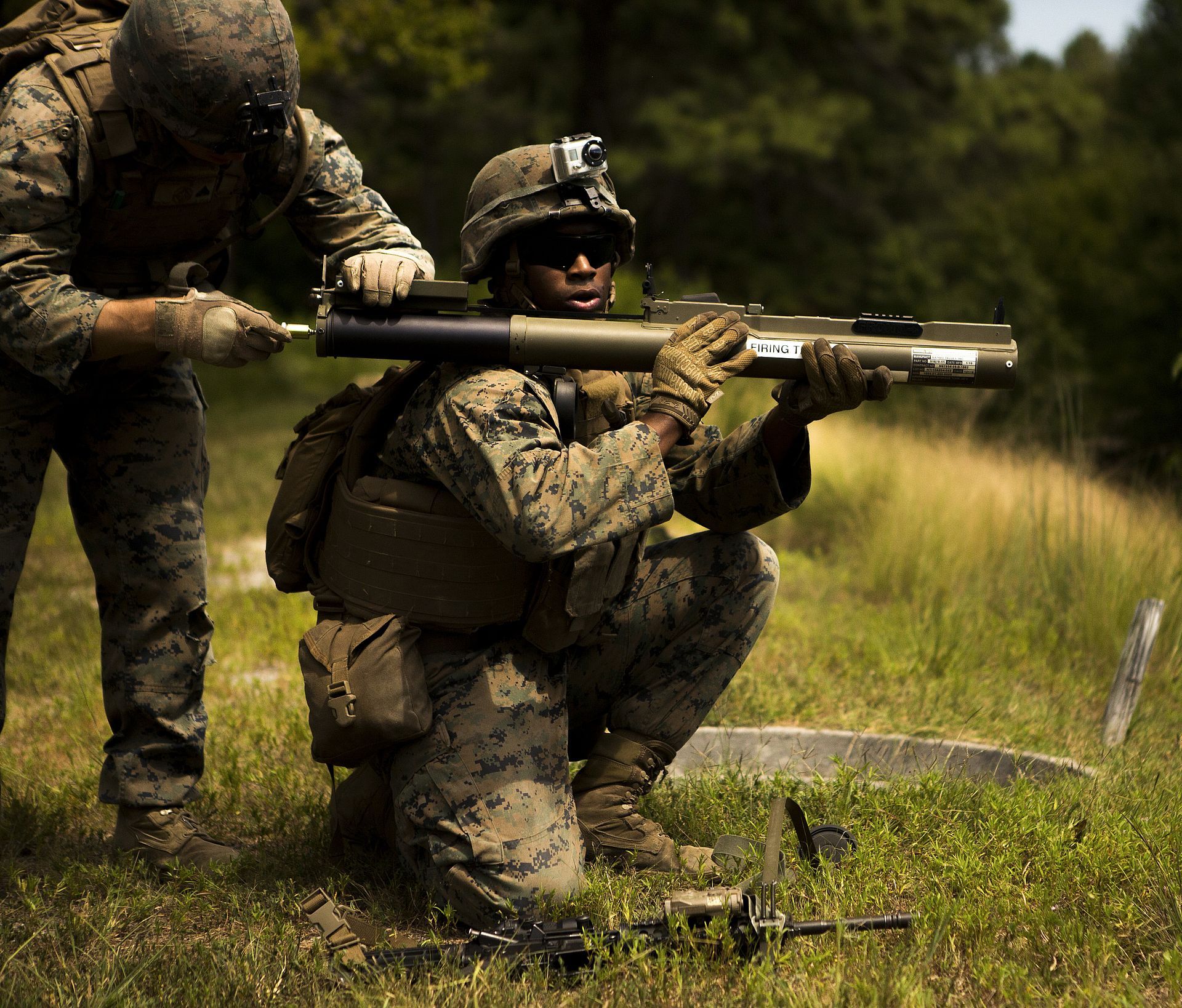
From the Defence Ministry’s tender website.
PELANTIKAN MTO BAGI MENGANGKUT LAW DISPOSABLE M72 ANTI STRUCTURE DAN LAW DISPOSABLE M72 ANTI TANK UNTUK TENTERA DARAT MALAYSIA
The advertisement did not mention numbers, its current location or the final destination. However if you have the proper documentation to bid for the tender you will get the full details.
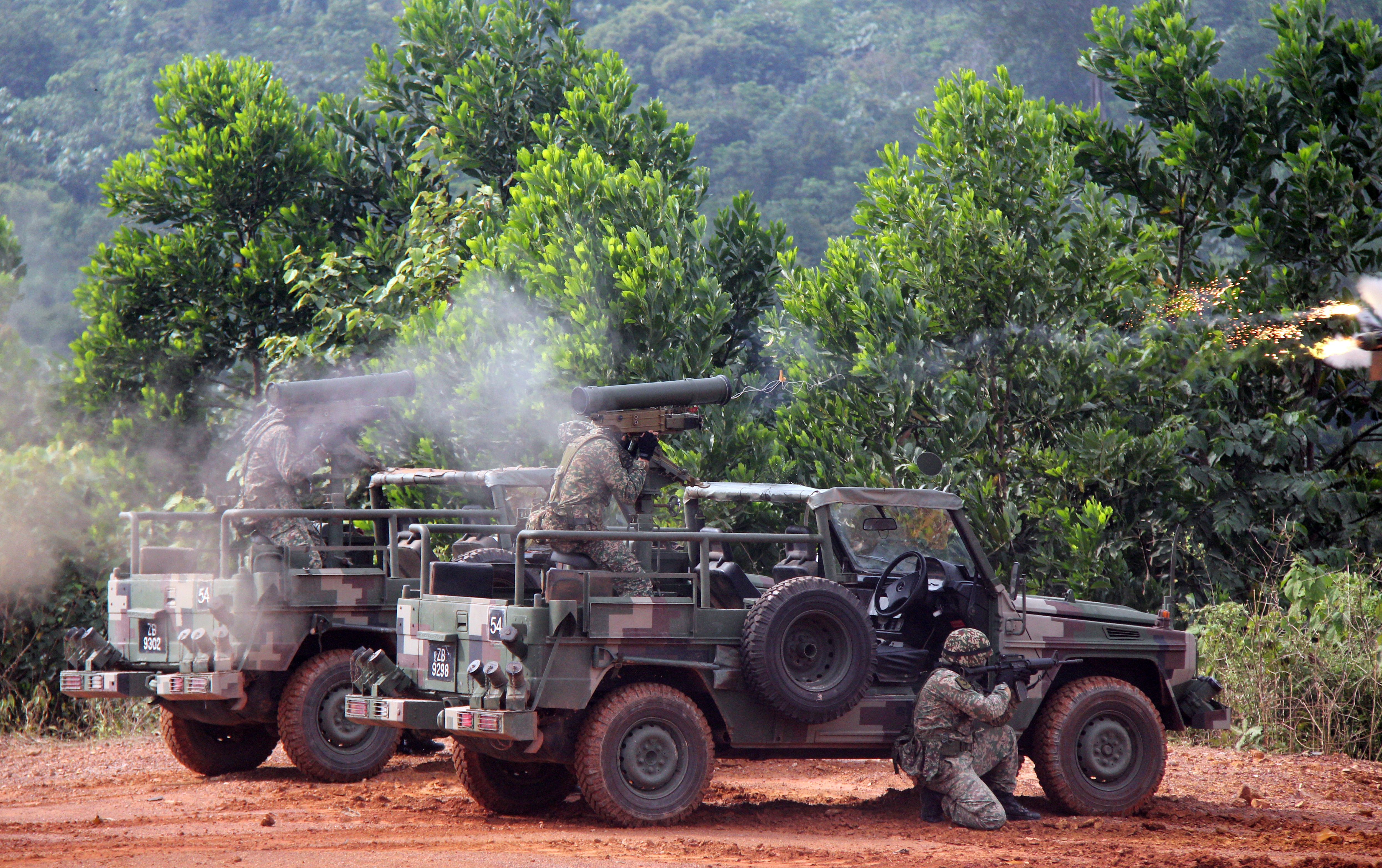
I assumed this is the second batch as Shepard News reported during DSA 2016 that the Army had taken delivery of the same weapons in late 2015.
The M72 light anti-tank weapon has already been delivered by Nammo in Norway to Malaysia along with all ammunition with the exception of BDM. Malaysia has also taken delivery of the M72 ASM RC (anti-structure munition reduced calibre).
The spokesperson said the most recent deliveries to Malaysian forces took place within about six months.
‘They have a long term plan to buy M72 for training and inventory and add future improved variants as they become available,’ the spokesperson added
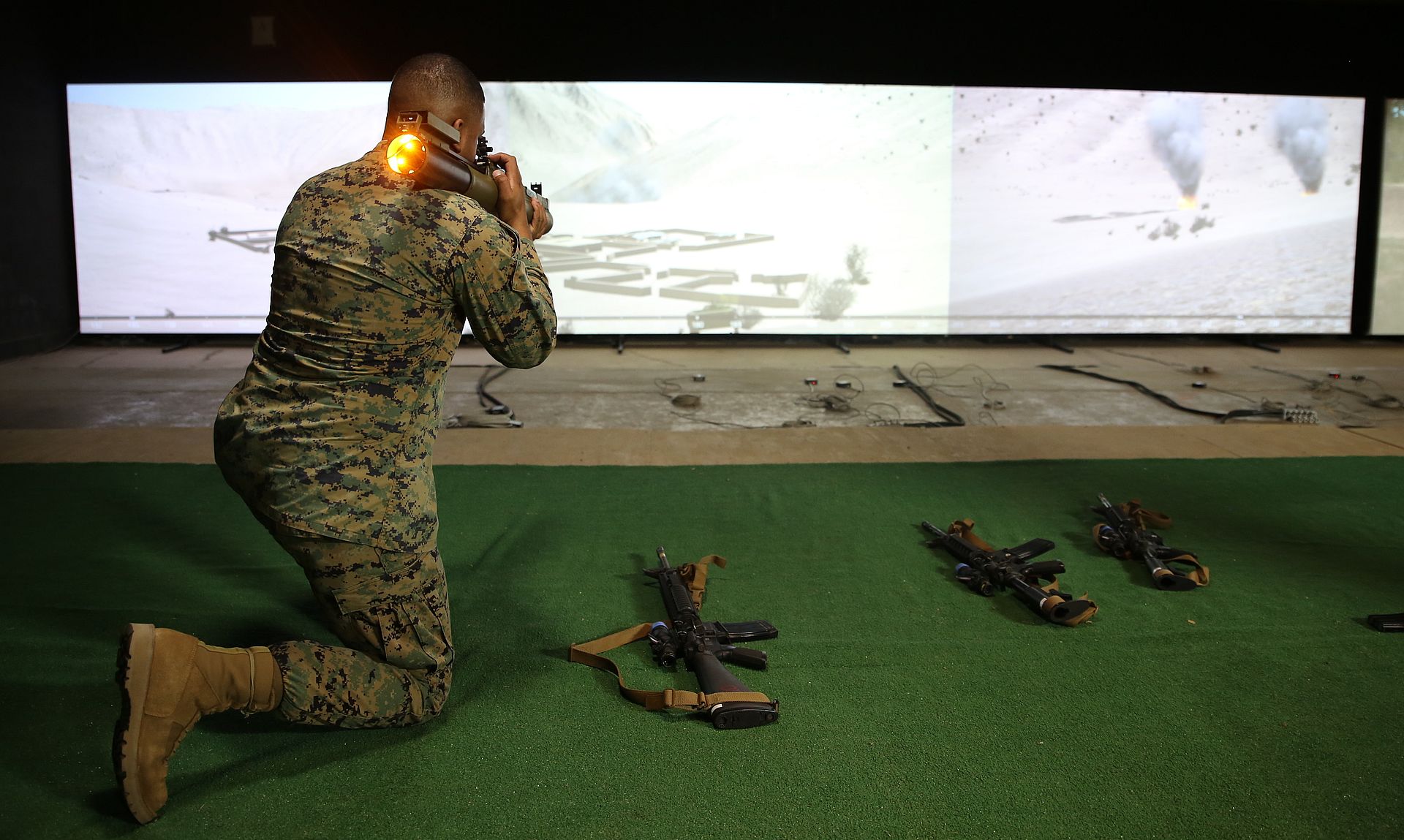
I cannot confirm the veracity of the delivery of the M72s or the interest on the other variants of the LAW as reported. AFAIK there have not been any announcement of the contract for the M72s in the first place though it was likely that these were ordered in 2014.
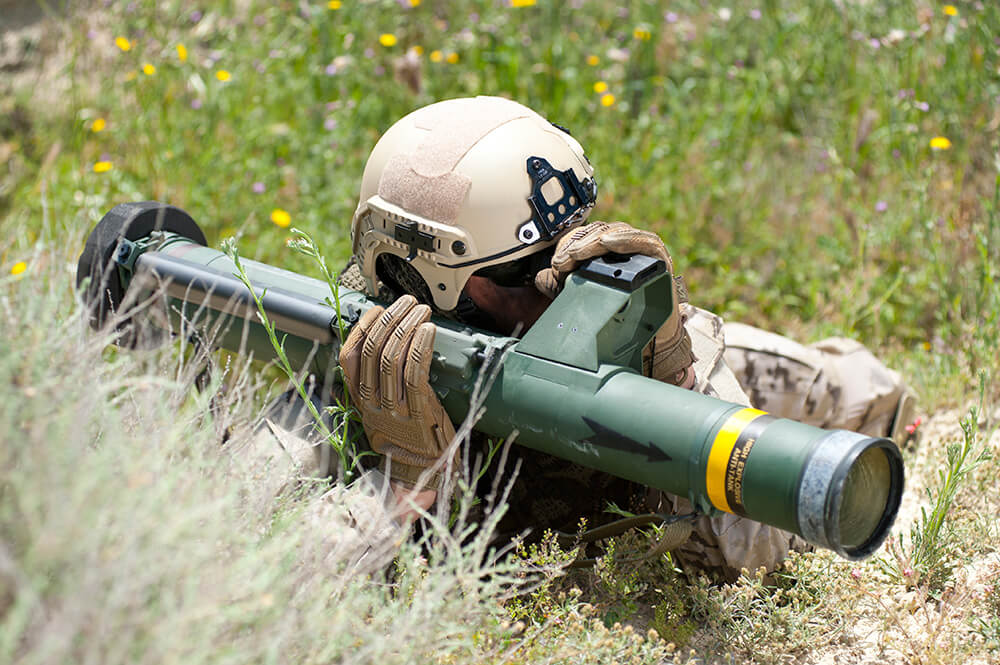
I have no idea whether the M72s are replacing the Instalaza C90s – which has a 90mm warhead compared to 66mm of the LAW – completely or it is just to complement them. The C90s have also been mordenised with anti structure and recently, a reusable version.
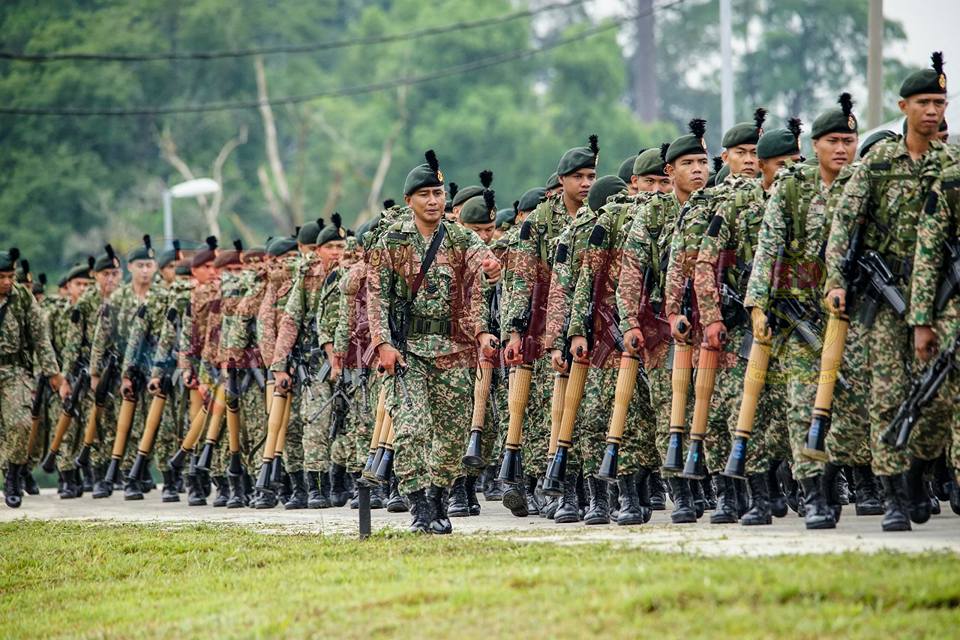
soldiers with their RPG-7 launcher as they walk in formation to the parade ground in February, 2017.
Anyhow both the C90s and M72s were not featured at the Army Firepower Exercise in May (not during the public day anyway) though the RPG-7 were demonstrated this time around. Personally I prefer the M72s or C90s due to their compact size compared to the RPG-7, the third unguided AT weapon of the Army.
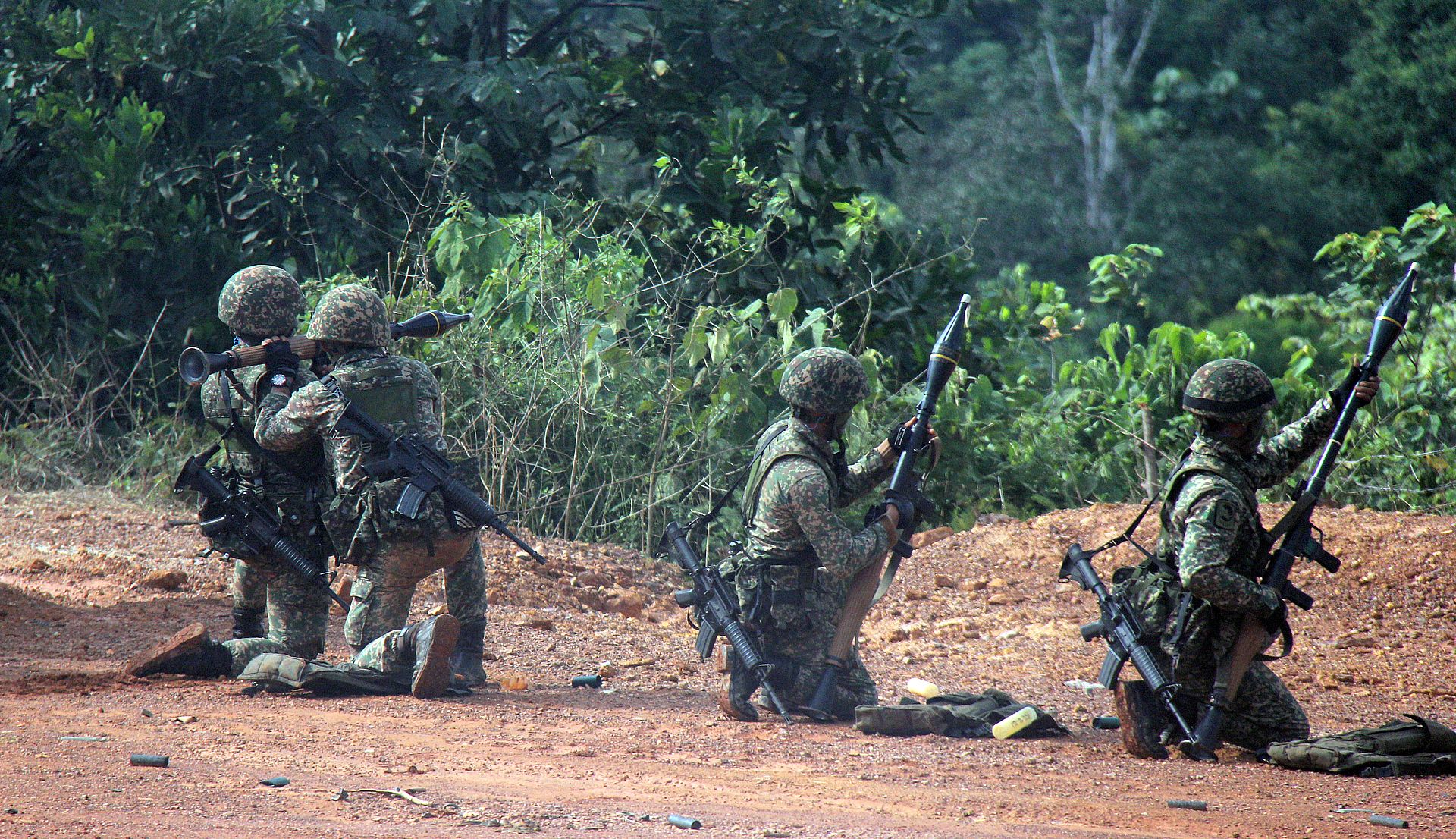
I admit this is just a personal preference only as I dont have any combat experience with any of them though I fired the C90 and RPG-7 – a single shot each – during a media excursion previously. From what I saw during live fire exercises, however, it is certainly much easier to fire the C90 (and likely the M72 as well) as the weapon is already prepared to fire (after cocking) unlike the RPG-7 which needed to be loaded on the firing line.

It will be great if we could add the Javelin ATGM to the inventory but it is unlikely due to the threat environment and budgetary reasons. We already have the Bakhtar Shikan and METIS ATGMs for anti-tank duties though these are with the mechanised units, which are also issued with RPG-7s.
— Malaysian Defence
If you like this post, buy me an espresso. Paypal Payment

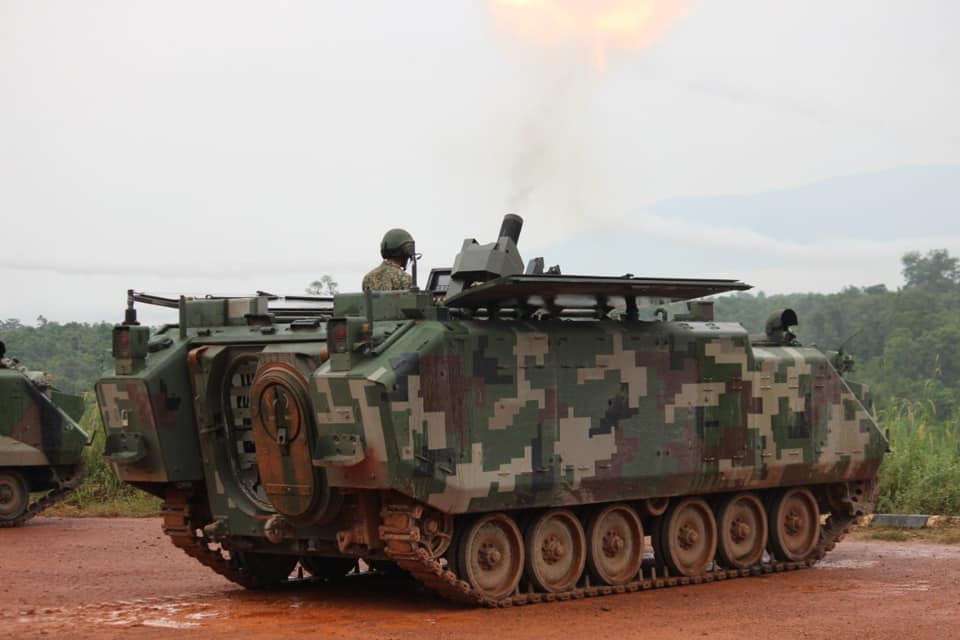
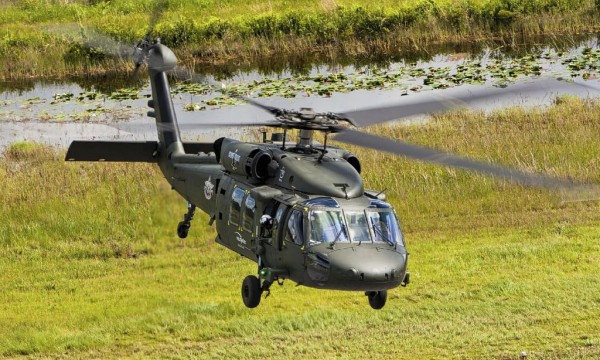
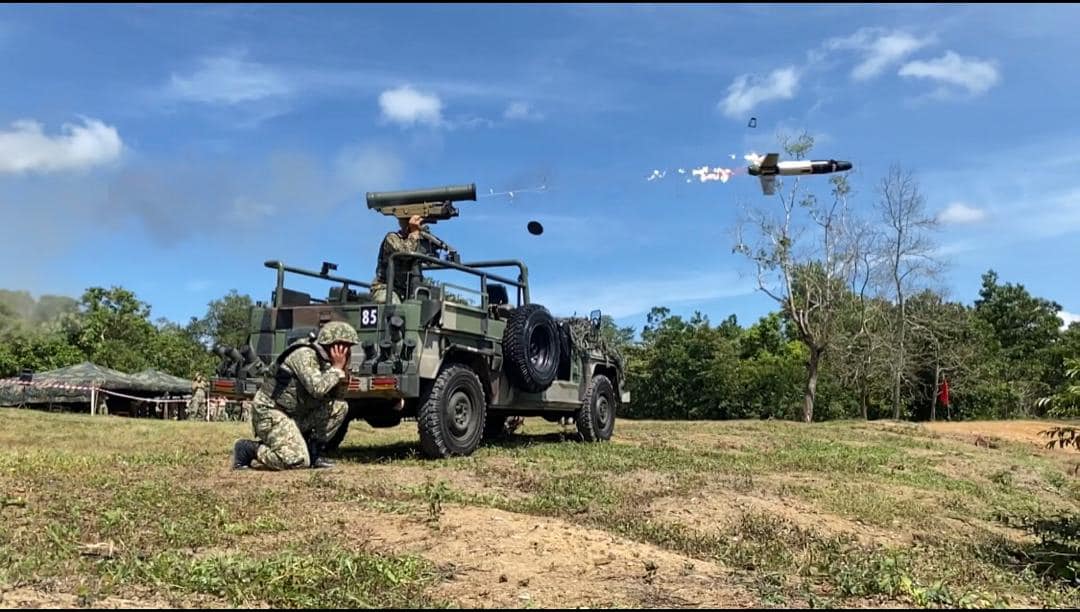
The first batch was delivered years ago to replace the C-90s. Was used at Lahad Dato. I took a photo of one (the bunker buster variant) which you posted. An issue with the RPG is its 15 metre distance before it arms itself; fired prematurely the round will bounce off the target. It is telling that we are still retaining the Carl Gustavs in the Support Companies.
This is what we bought over the years.
1. M-20s. – In service until the late 1970’s. Not sure if the army museum has an example. I’ve never seen a pic of it.
2. Energa grenades launched from SLRs – not a shoulder launched weapon but I’ve included it.
3. Carl Gustavs – recently worked on by Saab. Heavier and bulkier than disposable weapons or RPGs and needs a crew of 2 but more accurate.
4. RPG-7s – we later bought warheads from Romania and RUAG.
5. C-90s – time expired and replaced by M-72s. We only bought the standard version.
6. M-72s – 2 different versions. The army displayed an anti-structure version which it said was used at Lahad Dato. It may have been part of a quantity we received or bought for evaluation before placing an order.
– Back in the mid 1990’s it was wrongly reported that we bought the FT-5, a South African copy of the LRAC. After seeing the report in ADJ I asked a Denel guy at one of the DSAs; he said ”no comment”.
– I’ve been told that we had small quantities of Armbrust in the 1980/90’s. Have yet to see a pic of it.
– Given that Gerak Khas displayed an AT-4 many years ago, we probably bought a small quantity or received a few for evaluation.
– Have no idea how the M-72 really compares to the RPG-7 when it comes to penetrating performance and the distance it needs to arm itself but it is a smaller, more compact weapon.
– Also have no idea if the army was ever offered or looked into Panzerfaust. The price tag is probably a put off.
At the end of the day it matters not if it’s RPG-7 or M-72 or Carl Gustav. It’ll be the training, tactics, the availability of reloads and as always, luck that counts and makes the difference. The standard tactic against shoulder fired weapons will always be maneuver and suppressive fire. Contrary to popular opinion RPGs were used against helicopters long before Somalia; in Rhodesia, Angola and Vietnam.
Reply
You left out the Eryx bought for the Bosnia UN mission and were later issued to GGK. The only guided shoulder fired ATGM we had so far as it had expired already
That 15 meter distance is because it’s a rocket propelled while Carl gustaf is a recoilless rifle
If not mistaken the Eryx was used by 10Para, not GGK.
http://4.bp.blogspot.com/_En-sxfOkXP8/SeqNPl-Fx7I/AAAAAAAAAn0/IfPJhZmclog/s400/Eryx+MP.jpg.
BTW is the M72 only be used by specialized formations like GGK, or to be supplied to regular battalions?
Reply
GGK troops were the ones that hump the Eryx during Bosnia mission. I am assuming that the number of M72s we are getting are big enough for it to be issued to various units including the GGK
The 2 variants we bought from norway in 2015 might probably be m72 asm rc and m72 ec law mk1 or mk 2.
The 2nd batch might be add in numbers or might be the new fire from closure(ffe) variants with less backblast.
Just my estimation.
this is why we should choose M72 in the first place as BIS main bunker buster and anti armour weapon. it has the cool tactical look, power and much compact compared to the RPGs
Ask for French MMP or Ingwe infantry, get M72 LAWs… not even the new N-LAWs (which Indon is reported to operate), sigh… oh well I suppose anti-tank is not the priority.
All shoulder launched rockets have to fly for a minimum distance before their warheads arm themselves. Carl Gustavs, like the section level 60mm mortars, are also used to lay smoke and illumination. Laying smoke is something the Milkors also do.
Thus the question : given the dfficulty in lugging a 60mm mortar and its ammo at section level; is there still a need for 60mm mortars? Note that many armies no longer see a need for section level mortars.
The question to ask is, if the 60mm mortars are not worth the burden they impose, and especially if they are not often carried in practice, why does it it take so long for us to learn that lesson and remove them?
Yes all lessons take time and all armies, even the best resourced “tier one” armies as some say, find themselves unprepared. But what exactly is the point in this case?
Reply
I think the question is whether its there the 60mm mortar remained for the sake of nothing better or it’s actually needed even as the infantry units especially the BIS comes under manpower pressure. It is hard to get answers to these questions as the Army is reticent to talk about this things
Chua,
Ingwe is too bulky and heavy for use by infantry units. Like TOW (which it wa based on) it’s intended to be used by mechanised and motorised units, not lugged around.
…,
Way before the 2015 date cited by Shepard a M-72 used at Lahad Dato was displayed by the RMR. Given that it be
C-90s are gone and that the RPGs have gone to only certain units; it’s a certainty that the M-72s will be widely distributed.
A lot of what Gerak Khas did in Bosnia was outside the remit of UNPROFOR and remains rahsia including the circumstances the led to the death of a Gerak Khas man.
Reply
I used a picture of a GGK FIV with a number of C90s during Army Day parade in 2013, it was lost when my server went kaput last year. Likely training rounds though
Irsa,
What constitutes a “cool tactical look” is a matter of opinion.
In terms of penetrating effect we have no idea how the anti structure/bunker M-72 measures up against a standard RPG round or against Bunkerfaust or the anti structure/bunker C-90 variant. A lot also depends on the type of structure-bunker : several inches of concrete or wood and sandbags?
An advantage RPGs have is the availibility of several types of rounds including tandem and thermobaric. RPG rounds – at least Russian ones – are also very durable. RPG rounds several years old have been known to fire without any issues after being buried in the desert for several years only wrapped in plastic. Can we say the same of Carl Gustav, M-72, C-90, AT-4, Apilas, LAW 80 and Panzerfaust?
AM,
The Milkor can lay smoke, illum and HE and is ”light” compared to a 60mm mortar. As such, having Milkors in units which also have 60mm mortars doesn’t make sense. In a low intensity scenario not many rounds have to be carried but in other scenarios which require many rounds; who carries the ammo; especially if the infantry are operating on foot for extended periods? In many armies 60mm mortars were mainly used for smoke and illum. We have MAPAM AP rounds for the 60 and 81mms.
Marhalim,
Yes I remember that. There were 2 used C-90s on the bonnet as well as a Barett. Inside the driving compartment was a pintle mounted GPMG [with a black polymer stock which indicates it’s from Manroy] with a thermal imager. At the same exhibition the RMR also displayed an Armbrust which I at first thought was ours but was actually a ”trophy” or souvenir from Somalia.
Hoping one day soon when they will issue replacement for the ERYX. its about 27 years old already in our inventory, i presume 2nd oldest after the carl gustav.
Reply
Its actually 22 years as Eryx production started in 1994. We were among the first buyers as the missile was displayed at a Ranger camp in Ipoh where the UN contingent for Bosnia were preparing for deployment. The launcher was marked as Eryx ATGM and I asked the GGK troopers there whether this was a new weapon and they said yes and it was meant to be used against tanks if they encounter them in Bosnia. Later when I asked the general, I cannot remember exactly who, I think it was Gen Che Mohd Noor, he got hot all over the collar asking me how I knew it was a missile. I did not mentioned the missile in my story – I was with the NST – at that time as the PR officer asked me not to write about it as it was supposed to be rahsia. I am not sure whether we transported the Eryx to Bosnia or we got another batch there directly from France. As whether or not the Eryx remained in the inventory I am not sure but if they didn’t buy another batch later it is likely those delivered in 1995/96 are time expired already. The Goose rounds are not carried in the tube, its loaded just before firing. The rounds are manufactured and sold separately like the RPG rounds so it is more easily replaced throughout the years unlike the Eryx, M72 and C90. The Goose launcher can accept a number of different warheads fit for the tasks the units are supposed to do
Azlan,
As it is, I recall being told at a 2012 open house that the 60mm mortar is a platoon level weapon. Are you positive that it is a section level weapon?
I have a photo of the data sheet from the open house. Let me reproduce it here.
The size and composition of the combat load tells us the army uses it mainly for firing HE. Obviously the platoon will not be carrying 85 rounds with them (which would weigh 399.5kg excluding packaging).
Would love to know how many rounds they carry on foot or if sometimes don’t carry the mortars they at all. And how the ammunition is packaged on the move (cardboard tubes?). Mortar propelling charges are external so there must be some way of keeping them dry. The fuses should be kept dry too.
Origin: Spain
Caliber: 60mm
Weapon weight: 7.801 kg
Ammunition types: HE, Smoke, Illum
Effective range: 1050 m
Maximum range: 1975 m
Projectile weight: 4.7 kg (this can’t be right.)
Lethal radius: 20-30 m
Danger radius: 100 m
Rate of fire: 30 rounds per minute
Combat load: 85 rounds (60 HE, 20 Smoke and 5 Illum)
AM,
Maybe in some armies 60mm mortars are platoon weapons but in most armies it is issued at section level – at platoon level the troops can call on the 81mms operated by the Support Company. I’ve spoke to several ex army guys who told me the same thing, that it was issued to sections. What sections carry depends on the kind of threats they face. What they don’t need will be left at home. In the Falkands there were times where every soldier had a mortar round in his bergen.
Even in various Commonwealth armies, they were section weapons. Maybe we at times did issue it at platoon level but it has limited range for a platoon level weapon and if used against bunkers the 60mm has limited penetration. It would be useful though against troops in the open using rounds like MAPAM which we have. We used the Esperanza and the Thomson Brant (the same company who first made the 120mm we have on the Adnan. In many armies, 60mm mortars are mainly used for smoke and ilum. I forget who it was but one company made an extra compact 60mm intended for special forces work.
Marhalim,
I may still have a 1990’s NST cutting with the army saying they had plans to buy MBTs for Bosnia. The possibility that MALBATT would come under JNA tank attack worried us. The Mk19s and Milkors were also first bought for Bosnia. Prior to Somalia the army even announced plans to deploy an Alo 111. A bit of useless trivia, I believe we were the 2nd export customer after Canada for both Eryx and Starburst.
“Even in various Commonwealth armies, they were section weapons. Maybe we at times did issue it at platoon level but it has limited range for a platoon level weapon and if used against bunkers the 60mm has limited penetration.”
If this is the way things were, I believe this would have been in the times before shoulder fired weapons and underbarrel grenade launchers. With the introduction of these weapons it is natural that mortars as section level weapons would be displaced from the section. In our case, we have two RPG gunners and two infantrymen acting as RPG ammunition bearers. Mortars are useful but there is a limit to what troops on foot can carry.
What I was told is it is 2x 60mm mortars at platoon level for us. The idea of a section mortar in any case strikes most of us as an excessive burden on a section. An 85 round combat load seems more reasonable for a platoon than for a section. 1km does seem to me a reasonable range for a platoon weapon, especially as you said there are 81mm mortars in the support company. The support company would have a platoon each of HMG, GPMG, ATGM and 81mm mortars so firepower is not an issue.
AM,
You raise good points but by and large, like many other armies, in ours 60m mortars were normally issued at section level and were mainly intended for smoke and illumination. Whether they were actually carried or not and the amount of ammo carried depended solely on the curcumstances.
There is a possibility that the 60mm remains a section weapon but only in certain units who only carry it depending on the circumstances and always the possibility that some units have them in the Sopport Companies. During the 2bd Emergency it was normal for units to deploy without stuff they were authorised to be issue with for the reason that they were not needed and were to cumbersome to carry in the jungle; yet during exercises or time at the firing range these same stuff would if course be used.
AM,
You’re right it is an ”excessive burden at section level which is precisely why most or many armies don’t issue them any more. Also compare past sections and the BIS ones. Sections use to have a LMG, M20A3 and a 60mm which wasn’t carried when in the jungle. They didn’t use helmets and inside their packs they had to carry spare ammo, spare clothes, spare batteries for the radio and rations. Contrast this to BIS sections who have a LMG, M20A3, shoulder fired weapons and MIlkor as well as helmets, body armour (if any) and belt rigs with spare ammo and others. Whilst infantry sections during the 2nd Emergency operated on foot for 2 weeks or more and had to be self supporting; BIS sections are not intended to operate too far from their IFVs.
Reply
The BIS guys will be on foot just like the Paras, the guys with the IFVs are those with the mechanised units
The british army actually had to issue an UOR for new 60mm motars in afghanistan after retiring them post cold war. The 60mm mortar is usually a platoon level equipment, 1 support section in a platoon equipped with 1x 60mm mortar and a few gmpg, with all soldiers in the section carrying the mortar reloads.
Actually the army plans for 3 types of battalion, the BIS, BIP (para) and BIM (mechanized). BIS would still be mainly fighting on foot, without the support of IFV. Those with IFV, that would be BIM battalions.
Yes the BIS guys will be on foot but they won’t be required to operate alone for extended periods like how infantry units did during the 2nd Emergency and unlike the 2nd Energency a lot if the areas the BIS are expected to operate in will not be too far from the nearest road or dirt track to enable resupply or transport by whatever means.
AM,
I asked someone. He said that at first 60mm mortars were operated by mortar sections as part of the Support Companies. As time went on however during conventional warfare exercises 60mm mortars started to be issued at section level; as opposed to temporarily attaching mortar sections to infantry sections; at least in his unit. The whole idea was provide the section commander with his own firepower (due to the 6-8 81mms not always being available and comms issue due to terrain and limitations with the Racals and PRCs) and as a means of laying smoke and illum; as such most of the rounds were not HE.
On the subject of mortars the ones I know we got over the years are the Yugoslav 81mms (ironically later deployed to Bosnia), the Istalanzas, followed by the Denel ones. Not sure what mortar we operated during the post Merdeka and Confrontation period; probably the same one used by the Brits. The Police Field Force had some 81mms but like the the 90mm ammo for its V-100/50s was never actually issued. As for 60mms all I know are the Esperanzas and Thomson Brandts.
Reply
From the picture of my dad with his mortar platoon in the 60s yes its likely British ones
What version Carl Gustav is used by the Army M2 or 3?
Reply
Not sure which one could even be the M1 as the tube don’t wear out that easily. Pretty sure its not the M3
It would help if we knew the exact year Carl Gustav was ordered but we don’t. I’ve asked around but without success. My guess is that ours was ordered in the mid 1970”s and is the Mk1. How many we ordered and whether we placed follow on orders is interesting to speculate. If the sale was reported in the press at that time; it would take a visit to the NST’s (being older than the Star) archives to find out when it was ordered. Or maybe ask the army museum.
I doubt writing to MINDEF will do the trick. Then again, in the past I wrote to the Defence Attaché’s office in the U.S. and Australian embassy requesting certain info (the name of the Aussie company which built the sun shelters at Butterworth and the name of the first exercises conducted with the USN). I received a prompt reply acknowledging my queries but they had no answers.
Reply
If its in the 70s or 80s it is unlikely it will be made known. The DAs are not known to give out information to people they dont know personally. Even then your results may vary.
The Australians just didn’t know. I later found out it was the same company that did work at Gemas and Gong Kedak. The Americans [an ex army guy attached to the DAs office] accessed their records at the embassy but couldn’t come up with anything prior to CARAT – it was actually Ex Mekar [a series of naval exercises way before CARAT which commenced after Mahathir signed the training agreement at the Pentagon].
During the emergency days, mortars were carried as a matter of need. There was no such thing as a mortar section or anything like it. But there were two mortarman n the mortar is controlled by the platoon sergeant. Mortars if carried would require each man in the platoon to carry two bombs each in addition to other equipment required.
The Carl Gustaf was purchased in the late 60’s n not in the 70’s. The one we bought were the original metal tube mark 1’s. Not sure if they upgraded the tubes with a better sight etc. The ones we had were equipped with an open iron sight only.
Use. Mortars are a dangerous weapon to own men. Firing it within the jungle with tree cover carries the danger of the bombs hitting a branch n deflecting down onto own position. Happen before. An own goal. Grenade launchers are safer because the bombs dont arm until a distance away from the shooter but once armed hitting only a leaf is enough to detonate the grenade
Maybe Army need more M72 for BIS of Border Regiment. As Bintulu is host of Sarawak-level National Day celebrations, can look see what outfit ATM send over for the parade. Hopefully the Army&Navy local garrison is on the march pass. Never see a Border Regiment outfit in full battle gear yet.
Thanks for checking out the mortars. Would not have expected to gain a history lesson from the issue.
Those interested in the name of the Australian company that did the HAS at Gong Kedak, and the shelters in Gemas for ASTROS ammunition and vehicles, can refer to David Boey’s blog post of 12 August 2016
According to a friend who spent quite a bit of time in the jungle(including 2 very brief contacts), his unit didn’t carry much grenades when on jungle ops. In his unit, before the 60mm was issued to the section (carried only during conventional warfare exercises); the 2 mortars formed a mortar section which was part of the Support Company. Back to the subject of grenades, in one of JP Cross’s (a Ghurka officer who served in the 1sr Emergency and Confrontation) books he relates an incident when a newly arrived officer was partly blinded when a grenade he threw bounced back at him after hitting a branch.